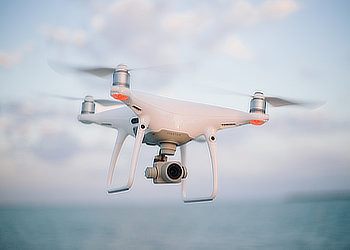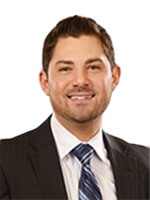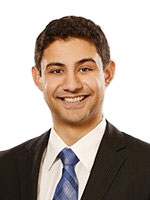Unleashing the Future:
Self-Flying Drone
Las Vegas, Nevada
The promise and potential of an autonomous drone

A self-flying drone, also known as an autonomous drone or unmanned aerial vehicle (UAV), is a drone that can operate and navigate without direct human intervention. These drones have advanced sensors, GPS systems, and computer algorithms that allow them to perform tasks such as flying, capturing images or video, and even making decisions autonomously.
Self-flying drones are continually evolving, with advancements in AI, computer vision, and sensor technology, making them increasingly capable of performing complex tasks autonomously. However, human oversight and intervention are often required to ensure drone safety and compliance with regulations.
Common injuries
Drone can collide with objects or people, causing injuries such as bruises, cuts, and fractures.
Sometimes, a drone pilot gets injured when assembling the new drone model or when cleaning the drone.
If you suffered a drone accident injury, ended up in a hospital, and missed time at work, call us at 702-432-1000.
How a self-flying drone works
A self-flying drone operates using a combination of advanced technologies and sensors. Their primary components and working principles include:
1. GPS navigation: The receivers of GPS (Global Positioning System) provide precise location data and allow drones to determine their position and plan flight routes.
2. Flight control systems: Drones have onboard controllers, essentially miniature computers that process data from various sensors and make real-time flight decisions. These controllers adjust the drone's orientation, altitude, and speed to follow a predefined flight path.
3. Inertial measurement unit (IMU): An IMU has accelerometers and gyroscopes that measure changes in acceleration and rotation. This data helps the drone maintain stability and control during flight.
4. Sensors: Drones use various sensors, such as ultrasonic sensors, LiDAR (Light Detection and Ranging), and obstacle detection sensors. These sensors help the drone detect and avoid obstacles, ensuring safe flight.
5. Cameras and vision systems: Drones use cameras and computer vision systems for capturing images and video, object recognition, and terrain mapping.
6. Communication systems: Drones often communicate with ground control stations or remote pilots through radio signals or wireless networks. This communication allows operators to monitor the drone's status, receive data from onboard sensors, and issue commands.
7. Pre-programmed waypoints: Autonomous drones can follow predefined flight paths or waypoints. Operators can input coordinates and flight parameters, and the drone will navigate accordingly.
8. Obstacle avoidance algorithms: Drones use complex algorithms to detect obstacles and adjust their flight path to avoid collisions.
9. Battery management: Advanced autonomous drones use systems that monitor battery levels, return to their launch point, or land safely when the battery is low.
10. Artificial intelligence (AI) and machine learning: Some self-flying drones incorporate AI and machine learning algorithms to improve their autonomy. These technologies enable drones to learn from their experiences and adapt to different environments and tasks.
Recreational vs. commercial drone
Recreational and commercial drones represent categories with different purposes, regulations, and considerations. Here's an explanation of each.
Recreational drone
Recreational drone usage is primarily for personal enjoyment, hobby, and leisure activities. People use recreational drones to capture aerial photos and videos, explore the outdoors, and fly for fun. Recreational drone flights are usually limited to lower altitudes to avoid interfering with manned aircraft. If you plan to use a drone just for fun, the FAA does require you to take an exam called TRUST.
Commercial drone
Commercial drone usage involves using drones for business, professional, or economic purposes. Industries such as agriculture, construction, cinematography, and surveying utilize commercial drones to improve efficiency and data collection. Commercial users often employ more advanced, specialized drones with high-resolution cameras, LiDAR, and other sensors.
Certifications for commercial drone operators
Commercial drone pilots typically undergo training and certification specific to their industry and the type of drones they operate. Getting a Part 107 Commercial Drone Pilot license is required to use a drone for business. In addition, many drone pilots get separate certifications for Aerial Mapping & 3D Modeling, Thermal Imaging, and Industrial Inspection, and other credentials.
Nevada Drone Laws
• NRS 493.103: Action for trespass against drone owner or operator;
• NRS 493.106: Weaponization prohibited;
• NRS 493.109: Operation near a critical facility or within 5 miles of an airport is not permitted;
• NRS 493.112: Rules for law enforcement;
• NRS 493.115: Operation by public agency;
• NRS 493.118: The Department of Public Safety must establish and maintain a registry of such vehicles operated by public agencies.
Injured by a drone?
If you get injured by a drone, whether it's a recreational or commercial drone, follow these 6 steps:
• Seek medical attention: If your drone injury is severe or requires medical attention, call for emergency medical help or visit the nearest healthcare facility as soon as possible. Your health and well-being should be the top priority.
• Identify the drone operator: If possible, try to identify the operator or owner of the drone. This information can be valuable for reporting the incident and for any legal actions that may be necessary.
• Contact law enforcement: Depending on the severity of the injury, you may need to contact the local police or law enforcement agency to report the incident. Provide them with all available details, including the location, time, and any information about the drone operator.
• Document the incident: Collect as much information as possible. It may include taking photographs of your drone injury, the location, and the drone itself if it's accessible. Document any witnesses who may have seen the incident.
• Report to relevant authorities: Report the incident to the appropriate aviation or regulatory authority, such as the Federal Aviation Administration (FAA) in the United States. Include photos of your drone injury.
• Preserve evidence: Keep any evidence related to the incident, including medical records, photographs, witness statements, and correspondence with the drone operator or authorities.
Who is liable?
In Las Vegas and Nevada, if a person gets injured, the negligent party (or their business insurance) is financially responsible for all damages.
The negligent party may include:
1. Drone Operator: The primary party often held liable is the drone operator. This is true for both recreational and commercial drone operators. Liability may arise if the operator:
a) Operated the drone recklessly or negligently,
b) Violated aviation regulations, including flying in a no-fly zone or exceeding altitude limits, and
c) Failed to maintain the drone properly, leading to mechanical failure.
2. Manufacturer or distributor: The manufacturer or distributor could be liable if the drone's design or manufacturing caused the accident. Product liability laws may apply if the drone was unreasonably dangerous or had a design flaw that led to the injury.
3. Property owner or manager: In some cases, the owner or manager of the property where the accident occurred may share liability. This might happen if they allowed the drone operator to use their property without ensuring safety or if they failed to post warnings about potential drone activity.
4. Other negligent parties: Other parties may be liable depending on the case's facts. For example, if someone interfered with the drone's operation, such as attempting to shoot it down, that person might be responsible for any resulting injuries.
Drone injury liability claims
Liability insurance the operator holds may cover your drone injury - depending on the policy's terms and conditions.
The owner's business insurance will most likely pay for your medical bills and other damages if the commercial drone injures you.
However, getting injury compensation could be challenging if you get hurt by a recreational drone. The homeowner or property insurance of the recreational drone operator may pay for your drone injury since the drone is personal property. The problem is - only some recreational drone operators are homeowners or have property insurance.
We can help
Determining liability in a drone accident injury case can be complex and may require a legal investigation and court proceedings in some cases. Liability will depend on many factors - the specific actions of the parties involved, whether the drone operator followed the government regulation and the extent of the injuries.
For more information or to discuss your case, call us at 702-432-1000 and ask to speak with an attorney who handles drone injury cases.
We don't charge for consultations.
We represent clients in Las Vegas and Nevada.
Last updated on January 3, 2025.

